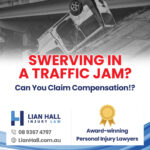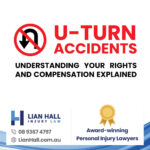The case with a twist
In the recent case of Cavanagh v Manning Valley Race Club (15 March 2022) the claimant sued his employer for a million dollars for an injury to his neck. The Claimant was Course Manager at the Bushland Race Course in Taree. Part of his job was to drive a tractor with a leveler attached to the rear. To make sure that the correct sand and cinders was applied the Claimant had to repeatedly turn and twist his neck to check and adjust the leveler.
Over many years of work he eventually suffered an injury to his neck and shoulder. He sued the Race Course for a million dollars. It was agreed that the Claimant’s injuries had been caused by an aggravation or acceleration of a degenerative disease in his cervical spine and that the work duties had been a significant cause of that degeneration. But the employer argued that it was not liable because it had not been negligent.

The Appeal Court made the point that an employer is not responsible for every injury suffered at work. An employer does not have a duty to keep a worker free from every injury at work. A claimant will only succeed if he/she proves negligence, that is: that the risk of injury was foreseeable, and, that there was something that the employer could have done about it, and, the employer failed to so something.
Initially the worker brought his claim in the District Court and he lost. He appealed.
The case turned in his favour
The NSW Appeal Court unanimously held that the Claimant’s work required him to repeatedly twist his neck to monitor and adjust the height of the leveller: it was not an occasional backwards glance; he had to repeatedly twist his neck to look backwards; whether he turned his neck every minute, or several times per minute is not important, the regularity and frequency of the turning and twisting was what was significant.
In those circumstances it was plainly foreseeable that a worker would be at risk of injury. Given the foreseeability of the risk that gave rise to a duty on the employer to do something about it. For example the employer could have installed a mirror or a rear-vision camera or could have installed a swivel seat. Had that been done the risk would have been significantly reduced. On that basis the Appeal Court was satisfied and the Claimant won his case.
This case raises a couple of interesting points
Firstly: The Appeal Court confirmed the long-accepted point that just because you can prove that you suffered an injury at work does not mean that you will win your claim. You need to prove that the injury was caused by the employer’s negligence.
Secondly: to prove negligence you must prove that the risk of injury was foreseeable. On that point the Appeal Court made an interesting comment that it was well known that repeated twisting movements create a risk of injury and that “…specific evidence to that effect was not necessary” [64].
While that seems like a common-sense outcome, certainly Lian Hall Injury Law would not recommend arguing a claim without evidence of a connection between the duties at work and the injury that you have suffered. Usually that evidence would come from a medical doctor or an engineer.
Thirdly: you need to prove that there was something that the employer could have done to have reduced the risk of an injury (such as install a mirror; swivel seat; camera etc), and, had that been done then the risk of injury would have been reduced. Again you will need evidence to prove this point.
The bottom line: An action to sue an employer for compensation needs to be carefully argued to give you the best chance of succeeding. If you have been injured at work we strongly recommend that you give Lian Hall Injury Law a call for a free initial chat about your compensation claim.










